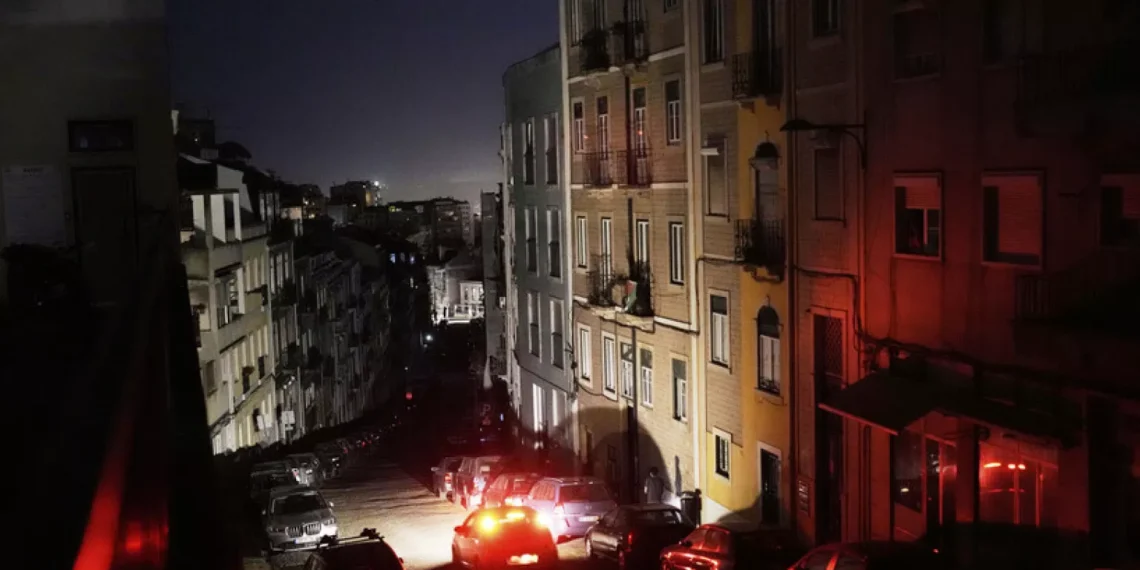by Anonymous Engineer, Daily Sceptic:

While a comprehensive investigation will take weeks to complete, today’s massive power outages across Spain and Portugal present compelling evidence of the inherent vulnerability in renewable-heavy grids and likely offer a stark lesson in the dangers of sacrificing grid stability on the altar of green energy. While officials scramble to restore power to millions and politicians inevitably deflect blame, the catastrophic failure aligns perfectly with warnings that power grid experts have been sounding for years: systems with high penetrations of solar and wind generation have diminished mechanical inertia and are inherently vulnerable to collapse.
TRUTH LIVES on at https://sgtreport.tv/
The inertia problem nobody wants to discuss
Spain’s electrical grid, once a model of reliability, has undergone a radical transformation over the past decade. Conventional power plants with massive spinning turbines – the kind that naturally resist frequency changes and provide crucial stability – have been systematically replaced with weather-dependent solar panels and wind turbines that contribute virtually no inertia to the system.
The result? A grid that may function adequately under ideal conditions but remains perilously susceptible to rapid destabilization when faced with disturbances.
Anatomy of a collapse
Initial reports from Spain grid operator Red Eléctrica indicate that ‘oscillations’ in the network triggered the cascade of failures. This technical language obscures a simpler truth: the system likely lacked sufficient physical inertia to withstand a relatively routine disturbance.
The data reveals the shocking speed and scale of the collapse. Real-time generation data shows that before the blackout, Spain’s grid was operating with an extremely renewables-heavy mix, including 18,068 MW from solar PV (by far the largest contributor at approximately 54% of domestic generation) and 3,643 MW from wind. By contrast, conventional synchronous generation sources provided minimal output: nuclear at 3,388 MW, hydro at 3,171 MW, and combined cycle at just 1,633 MW.
After the collapse, the generation mix shifted dramatically as operators struggled to restore the system. Total demand dropped from ~27 GW to just ~16 GW. Interestingly, nuclear generation disappeared completely from the generation stack, confirming that these plants – typically considered the most reliable part of the generation fleet – were forced to disconnect entirely during the event. Solar PV output fell by more than half to 8,236 MW, while other sources like wind and hydro saw similar reductions.
What is system inertia and why does it matter?
System inertia is the inherent resistance to sudden frequency changes provided by the kinetic energy stored in rotating masses of conventional power plants. When a disturbance occurs, this inertia automatically slows the rate of frequency change, giving operators crucial seconds to respond. Consider the difference between a heavily ballasted ship and a lightweight vessel in rough seas. The former can absorb massive waves without capsizing, while the latter remains dangerously vulnerable to sudden squalls.
Power system engineers have been warning about the high penetration of renewables and the inertia-related risk for years. The European Network of Transmission System Operators for Electricity (ENTSO-E) has been sounding increasingly urgent alarms about declining system inertia. Their studies methodically demonstrate that as renewable generation increases, the reduction in rotating mass weakens the grid’s natural ability to resist frequency disturbances and they’ve identified a critical vulnerability: when renewable generation dominates the mix, the resulting low rotating mass and insufficient inertia create conditions where frequency disturbances can accelerate rapidly – precisely the pre-failure conditions that existed in Spain’s grid before today’s collapse. Indeed, these conditions mirror the vulnerabilities observed in previous European events, such as the 2021 Iberian Peninsula separation.



